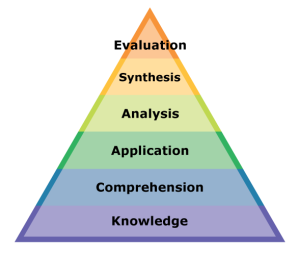In the first year of our homeschooling, I met an unschooling family. I think there was only one in our entire town, a bedroom community of Lexington, Kentucky, where there was a pretty hefty homeschooling population.
Before then, I had never heard of unschooling, either by name or by definition. The idea of unschooling, where formal and systemic academic studies are set aside in favor of child-directed interests, seemed strange at first, even shocking. But here’s what struck me about this family: they were probably the smartest, most creative, most accomplished, and even the most fun of the hundreds of families in our local homeschooling community.
The unschooling family lived in a huge home on a lake and they often opened it for homeschool meetings and parties. They didn’t talk about themselves or their homeschooling a lot, but, in true unschooling fashion, their story naturally unfolded as I got to know them better. Mom and dad worked in “Research and Design” at the University of Kentucky and the children spent their days reading their favorite books and engaging in their favorite activities. The children were slightly weird and wonderful, like most kids, and very happy and passionate about all their pursuits.
I was intrigued, but unconvinced. After all, 200+ years of standardized American schooling couldn’t be wrong, could it? And, besides, I was schooled traditionally and I turned out OK, didn’t I?
As the homeschooling years rolled by I met more and more families who chose alternative schooling methods for their children. Each time, my head turned until I could no longer look away. Very smart people were unschooling their kids without pause or apology and the results were enviable.
I wasn’t really surprised when I recently read that Elon Musk—the man that Business Insider magazine calls “the world’s most inspirational entrepreneur” has eschewed traditional schools and favors educational approaches far more akin to unschooling. Or that Dr. Sugatra Mitra, the brilliant scientist who won the 2013 $1,000,000 TED prize for his work in education, strongly believes that even the most disadvantaged children can inspire, organize and discipline themselves to learn, and then outperform their traditional school counterparts at almost every turn.
Or that James Altucher, the well-educated (Bachelors from Cornell, Doctorate from Carnegie Mellon) and uber-successful entrepreneur and hedge fund manger who writes best-selling business books, has been begging his children to quit high school so they can unschool.
And yet most of us — those raised on a steady diet of systematic instruction — fear unschooling like we fear Black Holes and other mysteries of the universe. We do not understand what we do not know. And we do not embrace what we have not experienced.
I stumbled into the world of unschooling with my third child, Jesse. I wish I could say I was brave and sure enough to have chosen it, but I’m not as smart at Altucher, Mitra, or Musk. Nevertheless, unschooling was a foregone conclusion once Jesse refused to do school at home and I refused to have him do school at school. Here’s what I learned in the process:
Unschooling works. It’s not just an alternative to traditional schooling, but far better. It produces happy, self-organized children who love to learn and it lays the foundation for a joyful and complete home. Scientists, neurologists, psychologists, and even enlightened educators can tell you precisely WHY unschooling works. I can just tell you that it does.
My son, Jesse, took a lifetime hiatus from traditional school and then used the skills he learned NOT doing school (creativity, resourcefulness, self-discipline) to outperform his friends in college, most of whom had spent 12+ years “practicing” for college. The idea that we have to layer year after year of progressive information-sharing and academic assignments on our children in order for them to do well in college is a fallacy.
What’s interesting about Jesse, though, is not that he makes good grades in college (although I think it’s incredibly instructive to know that he does), but that Jesse thinks and acts differently than most of his peers. He’s more self-motivated and more resourceful, definitely more willing to seize opportunities and take risks. He loves to learn and is an inventive problem solver.
Jesse takes good care of his body, his mind, his faith, his relationships, and his finances, but he couldn’t care a fig about school. He thinks college is pretty much a waste of time, except as a place to connect with people and have fun. A few months ago someone told Jesse a local real estate mogul was visiting his university and Jesse, a budding real estate investor himself, dropped what he was doing and ran across campus to meet him. The guy offered Jesse a job on-the-spot.
This is the way Jesse rolls. For him, forging new paths and creating new opportunities are easy and normal. But it’s not so hard to seize life and chase dreams as an adult when you have spent your entire childhood doing the same.
Most people who teach children seem bent on insuring children do just the opposite. They insist children shelve their incessant desire to imagine and play in favor of sitting in quiet and dull classrooms. They put all their time and attention into corralling children’s intellect and controlling their energy. They succeed in creating excellent rote learners and experts at executing rudimentary, well-defined academic tasks. But they are left with a problem in the end: When children spend 12 years learning how to succeed in school, how in the world do they ever unlearn it?
Maybe the secret to why unschooling works has nothing to do with what it does, but what it doesn’t do. Unschooling prevents schooling. That may be the simple, most obvious reason why smart people choose to do it.
Until next time…be fearless.

